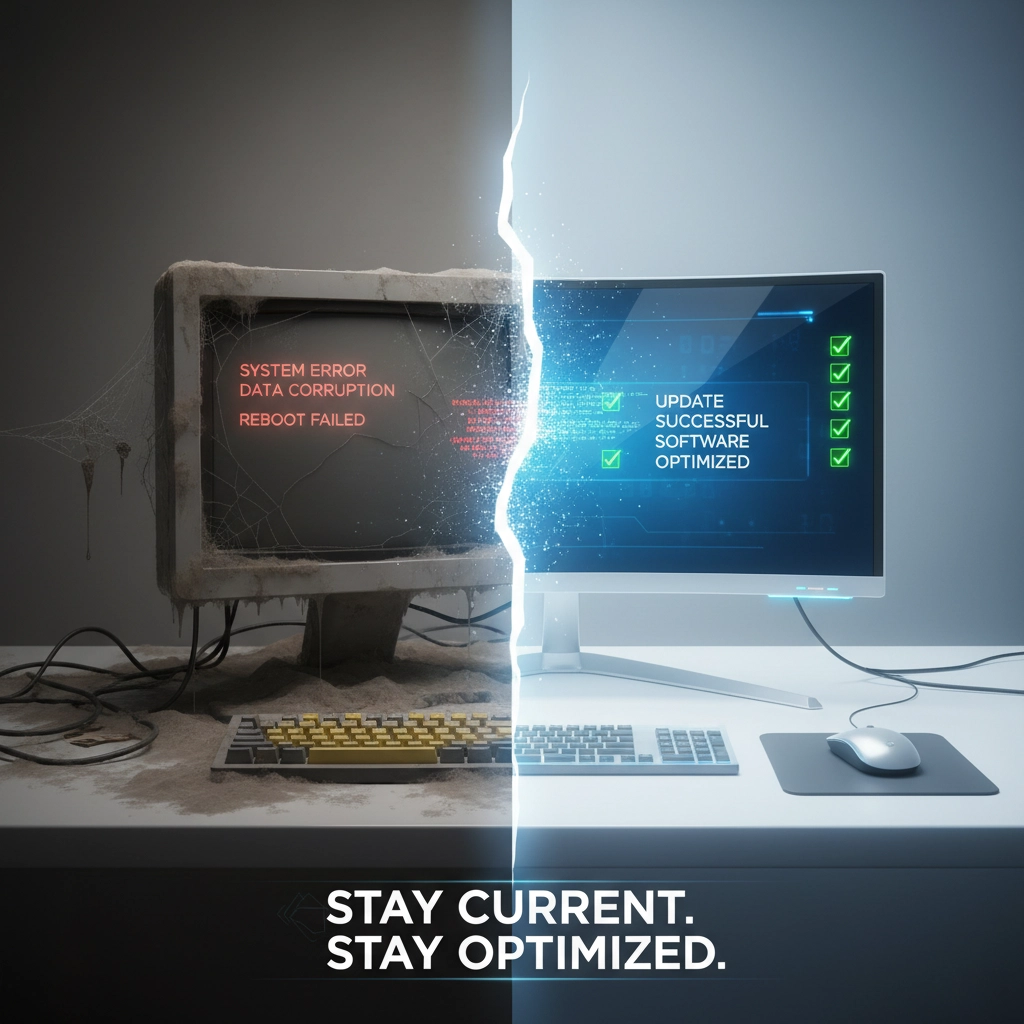7 Mistakes You're Making with Business Cybersecurity (and How to Fix Them Before It's Too Late)
Imagine the panic of discovering that your customer data has been compromised, or that ransomware has locked you out of critical business systems. Unfortunately, many businesses unknowingly make fundamental cybersecurity mistakes that leave them vulnerable to these exact scenarios. The good news? These mistakes are entirely preventable with the right knowledge and proactive approach.
Let's explore the seven most common cybersecurity mistakes that could be putting your business at risk: and more importantly, how to fix them before it's too late.
1. Weak Password Management and Credential Reuse
Your employees are likely using "Password123" or reusing the same password across multiple platforms. This seemingly harmless practice is actually one of the leading causes of business account takeovers. When teams share logins for SaaS tools or use weak, predictable passwords, they're essentially handing cybercriminals the keys to your digital kingdom.
The problem extends beyond individual password strength. Shared accounts create a domino effect where a breach of one system can cascade across your entire digital infrastructure, exposing sensitive data and intellectual property.
How to Fix It:
- Implement enterprise-grade password managers to enforce strong, unique passwords for all users
- Deploy multi-factor authentication (MFA) across all systems: this single step can prevent up to 99.9% of automated attacks
- Establish clear password policies requiring complex, unique passwords for each account
- Regularly audit credential usage across your organization

2. Delaying Critical Software Updates and Patch Management
Many busy teams push back software updates, especially for non-customer-facing systems. Every day you delay increases your exposure to known vulnerabilities that cybercriminals actively exploit. Unpatched software represents a prime target for ransomware and exploit-based attacks.
This issue is becoming even more critical as Windows 10 support ends in October 2025. Insurance companies already view outdated systems as negligence: one of the fastest ways to get cybersecurity insurance claims denied.
How to Fix It:
- Develop a formal patch management policy with strict timelines
- Automate updates whenever possible to reduce manual oversight
- Maintain a clear inventory of all devices, operating systems, and software versions
- Schedule regular maintenance windows for comprehensive system updates
- Prioritize critical security patches over feature updates
Understanding the importance of timely updates empowers your team to maintain a secure digital environment while ensuring compliance with industry standards.
3. Inadequate Employee Training Against Phishing Threats
Even your most tech-savvy employees can fall victim to sophisticated phishing emails that impersonate executives, vendors, or trusted platforms. With over 3.4 billion phishing emails sent daily and AI-driven phishing attacks surging more than 4,000% since 2022, traditional training methods are proving inadequate.
Phishing remains the top vector for credential theft, business email compromise, and malware infections. Without proper training, one employee mistake can cost your business thousands of dollars and compromise sensitive customer data.
How to Fix It:
- Run regular phishing simulations to test and improve employee awareness
- Implement dynamic security awareness training that adapts to evolving tactics
- Move beyond static presentations to interactive, scenario-based learning
- Reinforce a "verify-before-you-click" culture throughout your organization
- Deploy email filtering solutions that detect and flag suspicious content

4. Insecure Remote Work Practices
With remote and hybrid work now the norm, many employees access corporate resources from home networks or personal devices without proper security protocols. This creates significant vulnerabilities where sensitive business data can be intercepted or exposed on unsecured networks.
Your distributed workforce has exponentially expanded your attack surface, making traditional perimeter-based security models insufficient for modern threats.
How to Fix It:
- Deploy VPN solutions for secure remote access to corporate resources
- Enforce device encryption on all devices accessing company data
- Implement mobile device management (MDM) to monitor BYOD usage
- Establish clear remote work policies including secure Wi-Fi requirements
- Consider zero-trust security models that verify every access request
By regularly implementing these remote work protections, you create a safety net that allows your team to work productively from anywhere while maintaining security.
5. Treating Cybersecurity as Solely an IT Problem
One of the most dangerous assumptions in business environments is that cybersecurity is exclusively the IT department's responsibility. This siloed approach leads to gaps in policy enforcement, awareness, and response readiness across your organization.
When cybersecurity is confined to IT, other departments may not recognize potential threats within their daily operations or understand their crucial role in maintaining organizational security.
How to Fix It:
- Make cybersecurity a company-wide priority with leadership buy-in
- Ensure cross-department collaboration on security initiatives
- Align security goals with broader business objectives
- Develop security champions within each department
- Create clear accountability structures that extend beyond IT
Integrating cybersecurity awareness across all business functions empowers your entire team to recognize and respond to potential threats effectively.

6. Ignoring Dark Web Exposure and Breach Monitoring
Most businesses have no idea that their credentials are already for sale on the dark web. This represents a critical blind spot in cybersecurity strategy. Organizations that run dark web scans typically discover employee passwords from past breaches, compromised email addresses, leaked customer data, and login credentials for forgotten services.
Assuming that no notification means no breach is a dangerous misconception that leaves your business vulnerable to attacks using previously compromised information.
How to Fix It:
- Implement continuous dark web monitoring services
- Conduct regular vulnerability audits that include dark web scans
- Establish incident response procedures for discovered compromised credentials
- Monitor for your company's data appearing on underground marketplaces
- Take immediate action when compromised information is identified
7. Underestimating Small Business Risk and Assuming You're Not a Target
Many small and medium-sized businesses believe hackers primarily target large enterprises, creating a false sense of security. Cybercriminals actually prefer targeting smaller businesses because they often have minimal security measures, making them easier and more profitable targets.
This misconception leads to inadequate security investments and leaves businesses unprepared for increasingly sophisticated attacks targeting their specific vulnerabilities.
How to Fix It:
- Recognize that vulnerability, not size, determines attack likelihood
- Conduct detailed cybersecurity risk analyses to uncover unknown vulnerabilities
- Implement 24/7 threat monitoring to detect and neutralize threats in real-time
- Develop security awareness among leadership about threats targeting smaller businesses
- Invest in managed IT services that provide enterprise-level protection
Ensuring compliance with modern security standards allows you to focus on core business activities while maintaining robust protection against evolving threats.
Taking Action Before It's Too Late
Cybersecurity threats evolve daily, but your defenses can evolve as well. By addressing these seven common mistakes proactively, your business can significantly reduce its risk profile and build a more resilient digital infrastructure. The key is recognizing that cybersecurity is not a one-time implementation but an ongoing process requiring continuous attention and adaptation.
The cost of prevention is always lower than the cost of recovery from a successful cyberattack. Organizations that take a proactive approach to addressing these mistakes position themselves to avoid devastating breaches while maintaining customer trust and competitive advantage.
Don't wait until it's too late. Start addressing these cybersecurity gaps today, and give your business the peace of mind that comes with knowing you're protected against modern cyber threats. If you need guidance on implementing these security measures, contact our team to discuss how we can help strengthen your cybersecurity posture.











